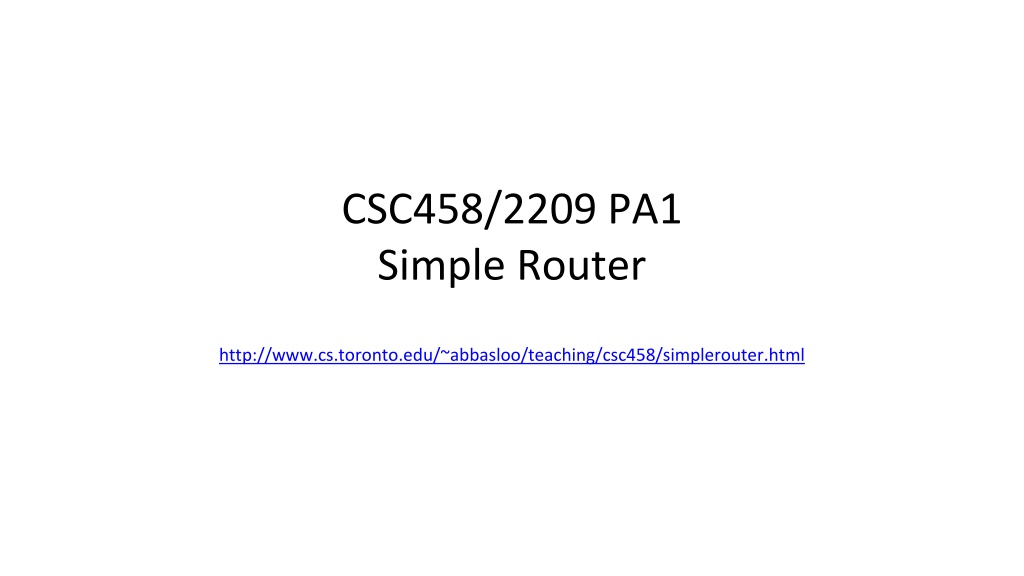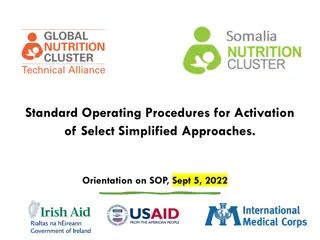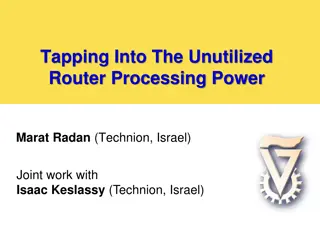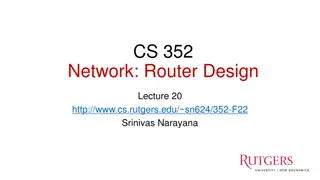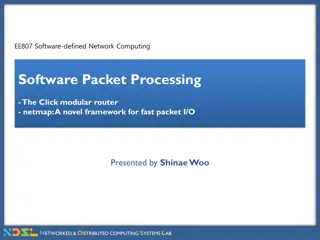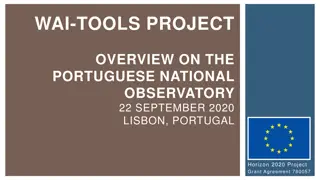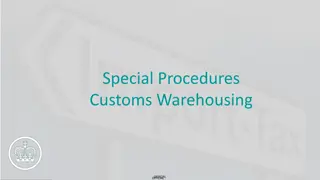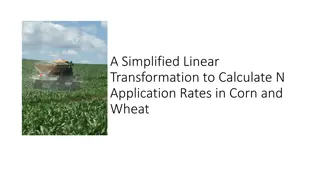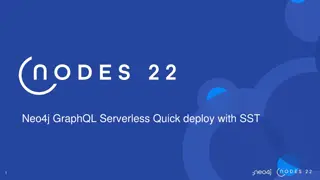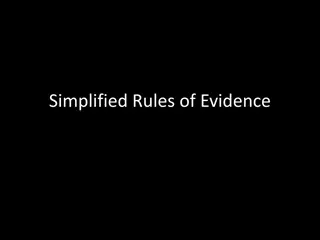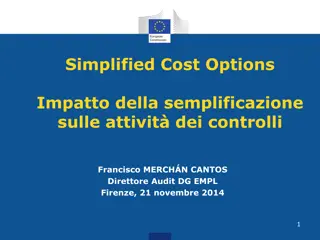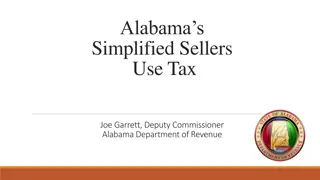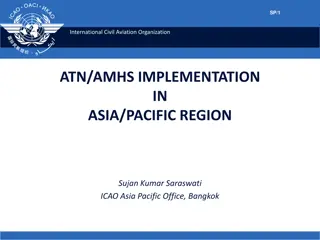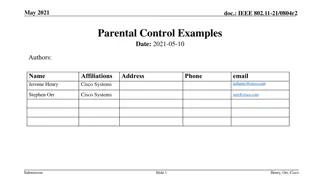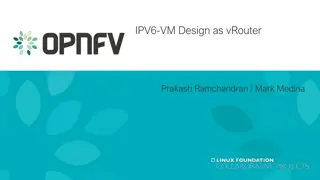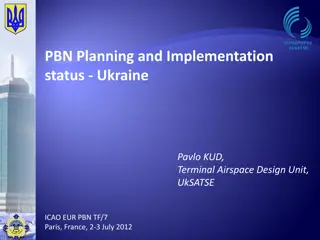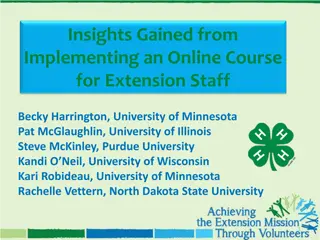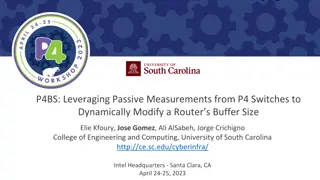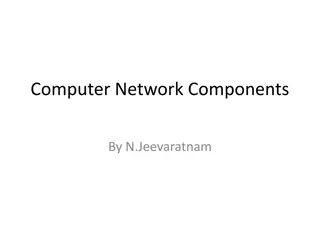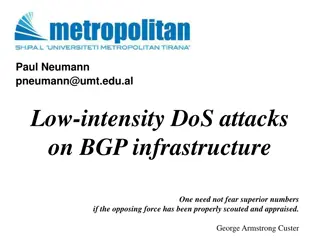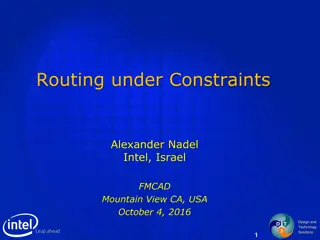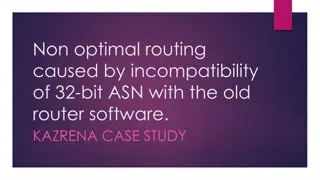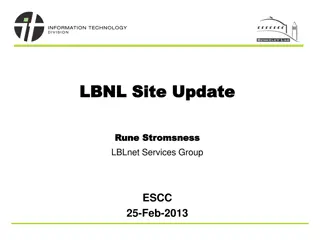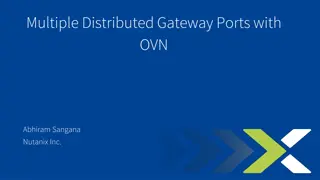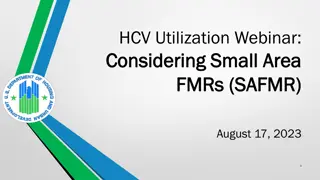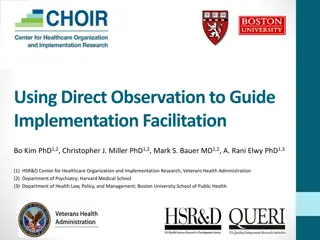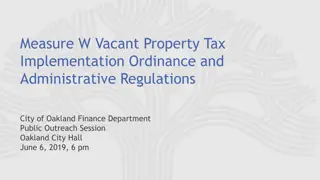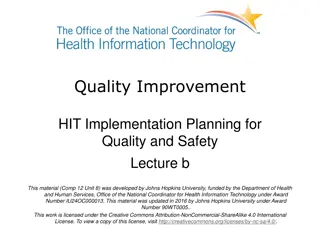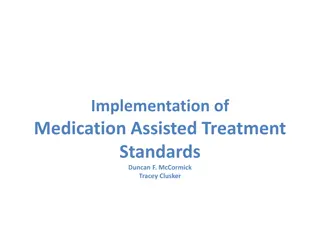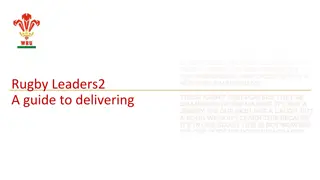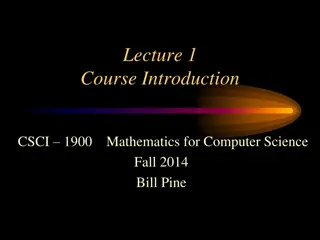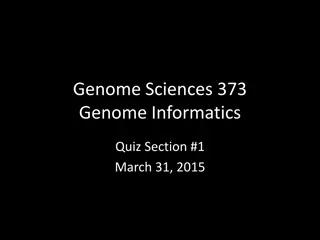Simplified Router Implementation for CSC458/2209 Course
You will be designing a simplified router for CSC458/2209 course with specific functionalities such as handling Ethernet frames, ICMP messages, ARP requests, IP packets, and more. The router will operate in an emulated network environment using Mininet and will need to route traffic between a client and HTTP servers, manage ARP cache, handle traceroutes, generate TTL Exceeds messages, respond to TCP/UDP packets, and ICMP echo requests. Detailed requirements can be found on the course webpage. Begin early as the implementation involves over 500 lines of code.
Download Presentation

Please find below an Image/Link to download the presentation.
The content on the website is provided AS IS for your information and personal use only. It may not be sold, licensed, or shared on other websites without obtaining consent from the author. Download presentation by click this link. If you encounter any issues during the download, it is possible that the publisher has removed the file from their server.
E N D
Presentation Transcript
CSC458/2209 PA1 Simple Router http://www.cs.toronto.edu/~abbasloo/teaching/csc458/simplerouter.html
Asking Question Please ask questions on Piazza. Try not to give away any homework hints. I will try my best to be responsive.
Overview You are going to write a simplified router Given a static network topology Given a static routing table You are responsible for writing the logic to handle incoming Ethernet frames (ICMP, ARP, IP .): Forward it Generate ICMP messages Drop it And more ...
But how to do it??? Where will my routing logic run? Where will the traffic come from? How will I test my code?
No hardware router Network topology emulated with Mininet: Your router connects 2 servers to a client Your router will handle real traffic You can use CDF machines
What your routing logic needs to do? Route Ethernet frames between the client and the HTTP servers Handle ARP request and replies Maintain an ARP cache Handle traceroutes Generate TTL Exceeds Message Handle TCP/UDP packets sent to one of the routers interfaces Generate ICMP Port Unreachable Respond to ICMP echo requests See course webpage for full requirements: http://www.cs.toronto.edu/~abbasloo/teaching/csc458/simplerouter.html
A rough flow chart Many things missing from this chart Checksums, TTLs Read the instructions carefully 500+ lines of code, so start early Submission: 8 time per day Last 7 days before the final submission The Markus server would give some feedback Final submission: 3 Weeks after release date
How to test your code? Test connectivity with ping from a server or the client Traceroute will not work well outside of Mininet: Use Mininet CLI mininet> server1 traceroute n server2 HTTP requests with wget, curl, lynx Don t forget to test error cases!
Some advice Be through in your testing Do not hesitate to change the routing table What about an incorrect routing table? Be careful when implementing Longest Prefix Match Don t get mixed up with endinanness: -Linux is little endian -Network is big endian -Try to put the calls to hton(), ntoh() in a single place Write good quality code Do not hardcode constants, avoid code duplication Coding Guidelines https://web.stanford.edu/class/cs244a/CS244aCodingGuidelines.html
Things that may be useful Mininet console, which supports: tcpdump, ping, traceroute (apt-get install traceroute on instance) Debug functions in sr_utils.c print_hdrs() print_addr_ip_int() GDB/Valgrind Tutorials Point: http://www.tutorialspoint.com/unix_sockets/index.htm Pizza
Start reading! http://www.cs.toronto.edu/~abbasloo/teaching/csc458/simplerouter.html
